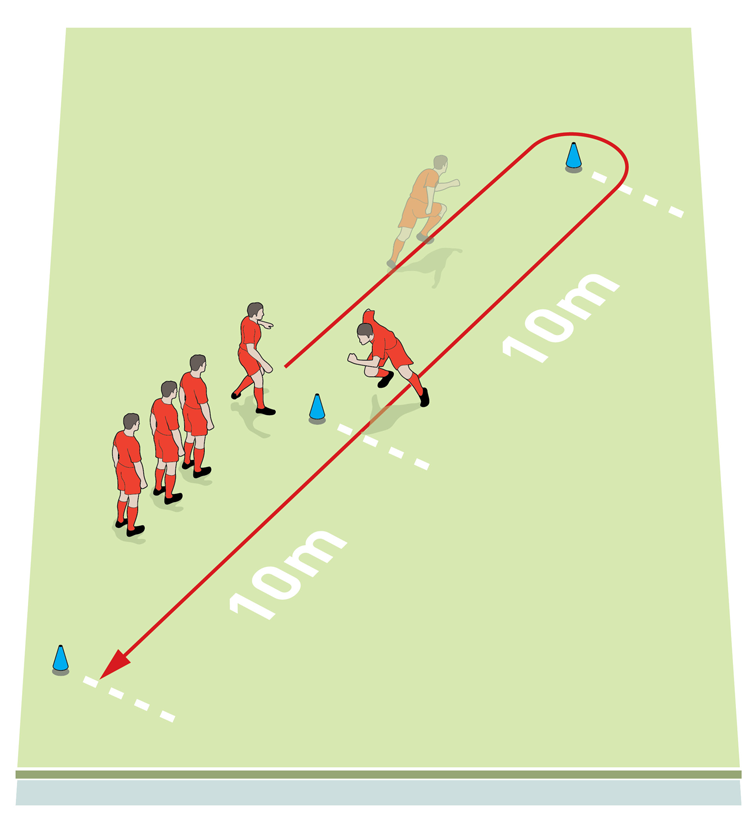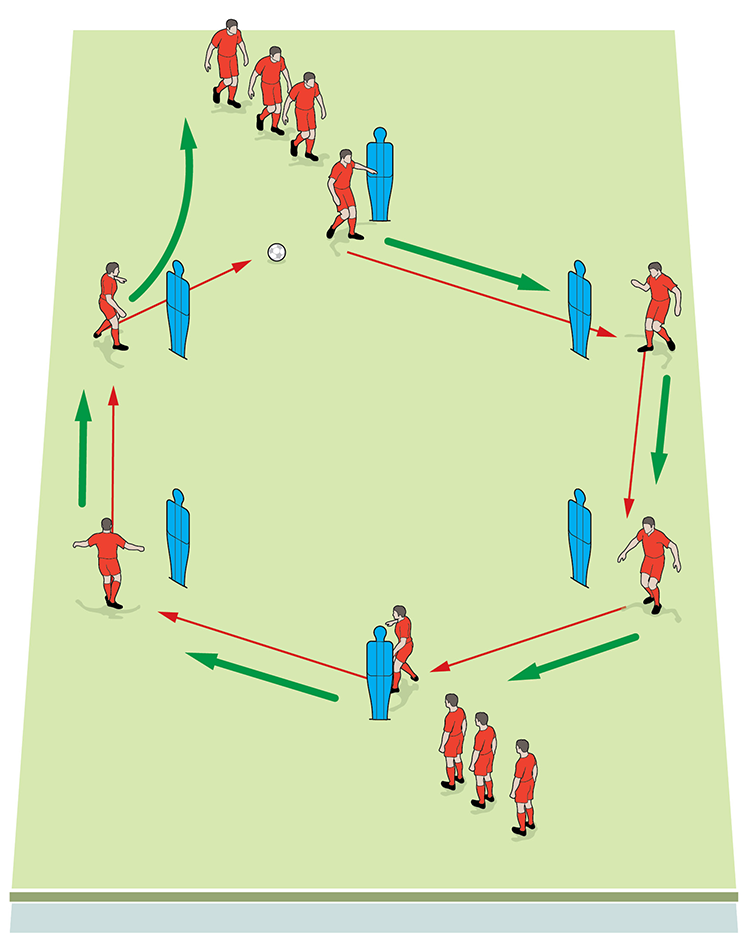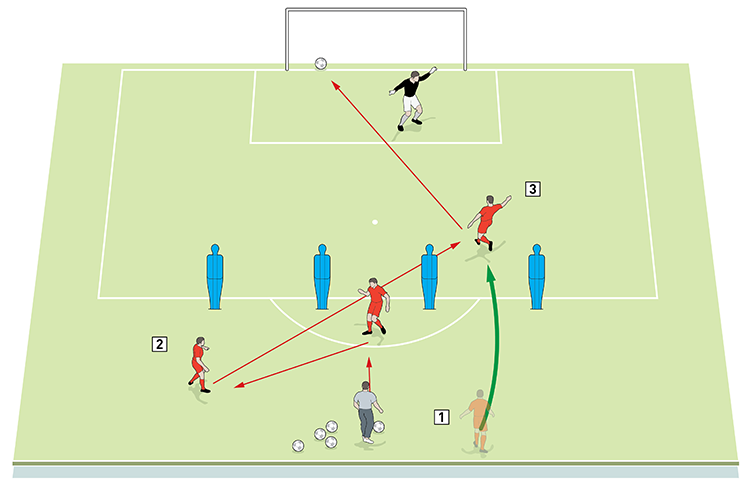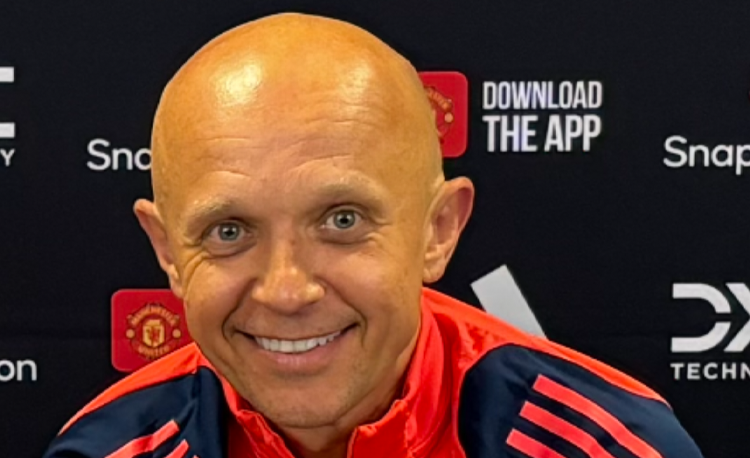Speed preparation
Keep players working hard and thinking with this session that’s full of different drills and exercises and covers physical, technical and tactical elements of the game.
| Area | Up to a half-pitch |
| Equipment | Balls, cones, goals, hurdles, ladders, mannequins |
| No. of Players | Full squad |
| Session Time | 60-90 mins total |
This session is varied in terms of its technical and tactical focus but the main theme is speed preparation with short, sharp drills to emphasise the quick physical nature of the session.
It is a session that’s full of different drills and exercises and covers physical, technical and tactical elements of the game in order to keep players working hard and thinking.
We used this session in the build-up to the Belgium Euro 2016 qualifying fixture at home in June. Because this international break fell at the end of the season, we had slightly longer to prepare and so the aim of this was to give the squad a good workout with high intensity practices helping to maintain fitness levels.
Warm-up and dynamic exercises
We like to mix up the exercises and stretches, starting with a slow jog and building up in intensity (1).
Each exercise that follows strengthens the core, whilst challenging players to slow down into and spring away from positions.
1

Speed preparation
We set up the four activities, as shown (2), splitting the squad into groups. Once players reach the top of the practice they return to the back of their lines. We then shift groups to the right for the next challenge. The activities are:
2

Dead leg runs
Players use quick feet to move over the four mini-hurdles, then sidestep to the right, and continuing forward over the next four.
Lateral runs
Players sidestep across the hurdles working from left to right, then advance forward and move right to left, then back to the start. When the end of each line is reached the emphasis must be on pushing away from the direction the player is moving in.
Rapid feet
This is similar to dead leg runs except we can vary the number of feet landing, from one at a time into each advanced space, to planting both feet in each area, then moving away quickly.
Acceleration/deceleration
To complete, players work one at a time, weaving through the mannequins, exploding into a sprint to the top cone, then rounding it and jogging back.
Technical passing drills
We set up two simple passing drills in a 12x12-yard area as shown (3,4). In these, we require the players to make explosive runs as they follow each pass made, before using the time off the ball to recover.
To add a technical element, and where reds are passing around a blue defender, we ask these attackers to hold their runs and not drift into an offside position before the through ball is played.
3

4

Shape practice and small-sided games
We’ve left this open to allow coaches to work on the tactical aspects most important to their team. At this stage of the session we would expect players to be working at full speed in a competitive game scenario, so set up an initial pitch to practice formation shape and systems such as blind side runs, overlaps, overloads and more (5). Then on a 10v10 small-sided game set-up, we play out what has been taught whilst also embracing the earlier exercises and moves (6).
5

6

Finishing practice
I like to complete training with a finishing practice so that players can leave feeling confident, so we have three players in a group, with three different scenarios ending with one shot at goal each, as shown below right (7).
7

2. The ball is played into the target man who lays it off for the second striker to take a touch and finish
3. The ball is played into the target man who receives, turns and finishes
4. Then the next group comes in and the practice starts again
How do I progress the session?
The aim of this session is, ultimately, to get players working at high intensity for short periods. This will increase as the session goes on before returning back to a lower level for the finishing drill where they should be working at a more relaxed (yet optimum) level.
What are the key things to look out for?
The key theme for this session is speed preparation - we want to encourage our players to be explosive on and off the ball when necessary.
There are also some classic mistakes to keep a look out for and eliminate. Some players might cheat and jog when they should be working explosively, yet as coaches, we must make sure we emphasise the importance of working hard and managing the time of each drill properly. If we see players growing tired, we will pause the session and allow them to recover. It’s important to get quality in the session as opposed to quantity, so we’ll always aim to keep it short but sharp.
Related Files
Editor's Picks
Deep runs in the final third
Using the goalkeeper in build-up play
Pressing principles
Intensive boxes drill with goals
Penetrating the final third
Creating and finishing
My philosophy
Pressing initiation
Compact team movement
Coaches' Testimonials

Alan Pardew

Arsène Wenger

Brendan Rodgers

Carlos Carvalhal

José Mourinho

Jürgen Klopp

Pep Guardiola

Roy Hodgson

Sir Alex Ferguson

Steven Gerrard
Coaches' Testimonials

Gerald Kearney, Downtown Las Vegas Soccer Club

Paul Butler, Florida, USA

Rick Shields, Springboro, USA

Tony Green, Pierrefonds Titans, Quebec, Canada
Join the world's leading coaches and managers and discover for yourself one of the best kept secrets in coaching. No other training tool on the planet is written or read by the calibre of names you’ll find in Elite Soccer.
In a recent survey 92% of subscribers said Elite Soccer makes them more confident, 89% said it makes them a more effective coach and 91% said it makes them more inspired.
Get Monthly Inspiration
All the latest techniques and approaches
Since 2010 Elite Soccer has given subscribers exclusive insight into the training ground practices of the world’s best coaches. Published in partnership with the League Managers Association we have unparalleled access to the leading lights in the English leagues, as well as a host of international managers.
Elite Soccer exclusively features sessions written by the coaches themselves. There are no observed sessions and no sessions “in the style of”, just first-hand advice delivered direct to you from the coach.









